Ocicat vs Bengal: Are They Different?
At a first look, you might mistake both the Ocicat and the Bengal cat as wild animals due to the coat patterns they display. Thankfully, these magnificent felines are great domestic pets. There may not be that much difference between them unless we start tackling their temperaments. Some characteristics may only become distinct under a magnifying lens.
So, what’s a better way to get to know each breed and finally decide which kitten to give to your family? This article will give you all the details and guide you in choosing the perfectly loving cat.
Table of Contents
Breed Origins
Ocicat
The coming of the Ocicat was never intentional at all. This cat hailed from America emerged after various breeding programs done by Virginia Daly in her attempt to create an Abypoint Siamese. The first-ever Ocicat kitten was named Tonga. Reports show that Daly’s daughter described Tonga to be similar to the Ocelot and must, therefore, be called Ocicat. Sadly, Daly was not interested in creating a new breed.
However, Dr. Clyde Keeler, a geneticist, took a liking to the ocelot-looking cat. Due to his goal which was to keep seeing a domestic cat having the resemblance of the vanishing wild cat such as the Egyptian Fishing cat, Daly repeated the breeding process until another tawny spotted cat was birthed. She then named it Dalai Dotson.
It was further developed with the help of the American Shorthair to introduce silver. Many breeders then followed Daly’s footsteps in multiplying and improving the new lines of the Ocicat breed.
Bengal
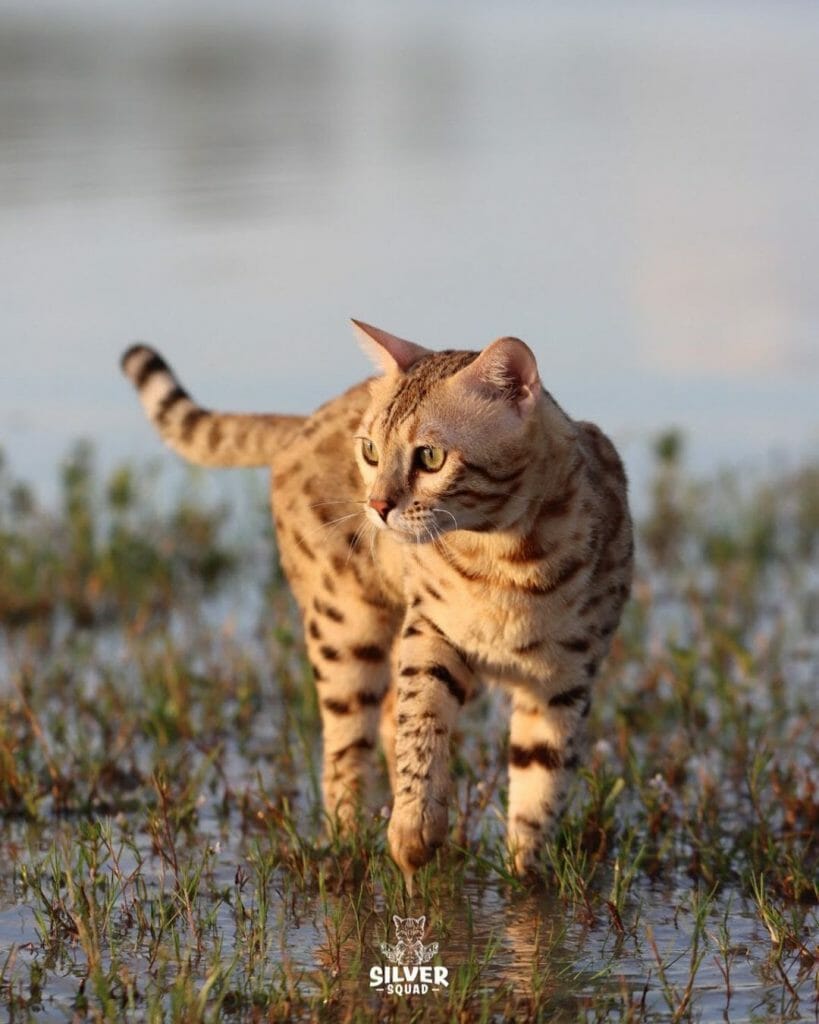

Considered to be a hybrid cat breed, the Bengal was the result of domestic and Asian Leopard cat mating. This feline originates in the United States, however. It’s just that he has Asian roots.
It is believed that Bengal breeding occurred for over 120 years already, but it took time until the 1970s when the Bengal breed was established. Through Jean Sugden Mill, she repeated the breeding program that created the Bengal kitten. Her main goal was to develop a cat with an exotic appearance and a domesticated temperament.
Nowadays, Bengal cats are bred from other Bengals and are slowly drifting off their exotic ancestors. Nevertheless, they are one of the most expensive cats to have and the most sought out by cat lovers all over the world.
Size, Appearance, & Coloring
Ocicat
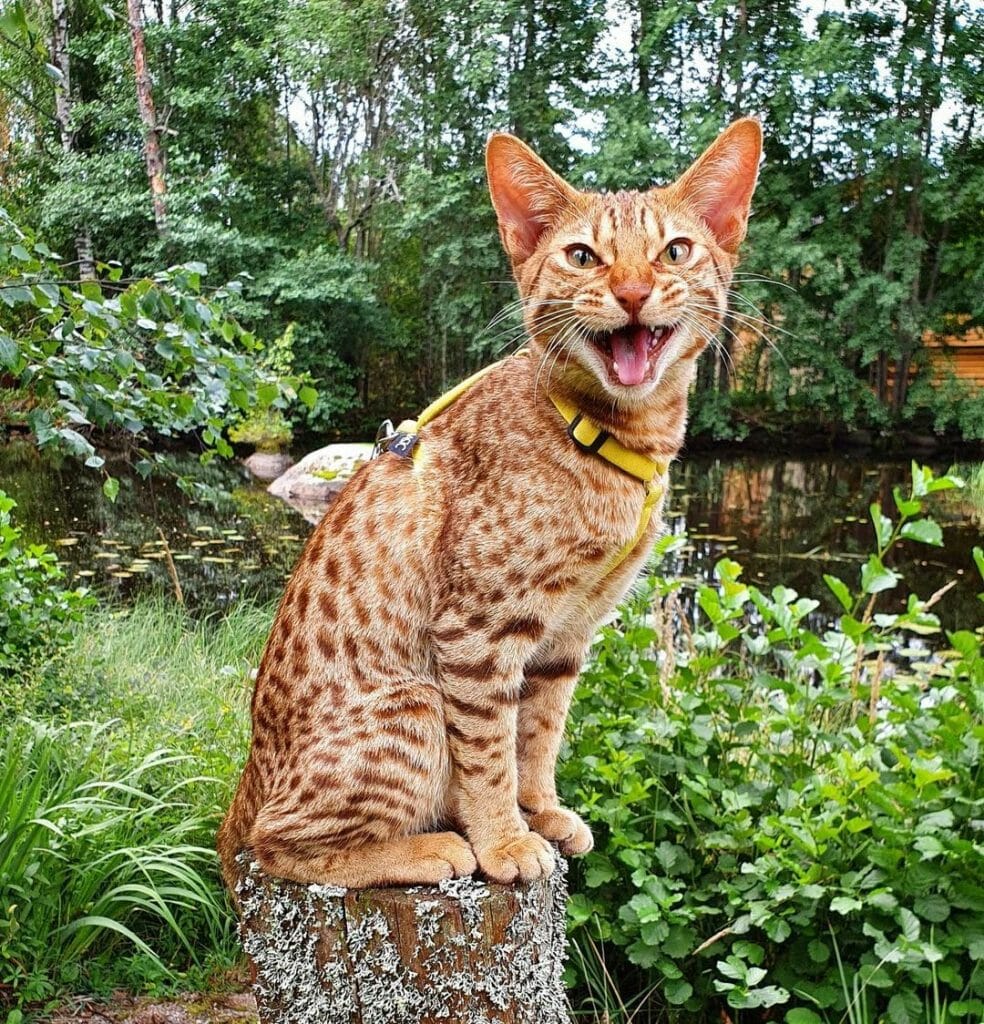

The unusual coat pattern of the Ocicat breed makes it easy for anyone to spot him. The said cat has golden or brownish spots all over his torso. Some Ocicats may have solid colors, point features, and tabby patterns, but the majority of these cats exhibit their unique coat.
The ideal height and weight for this breed are 9-11 inches and 6-15 pounds, respectively. His physique tells how athletic he can be due to his muscles that can be felt by touch. Some Ocicats can be a little larger than your average house cat, but this depends on several factors.
There are various natural colors available on this breed which can be:
- Cinnamon
- Blue
- Tawny
- Fawn
- Lavender
Bengal
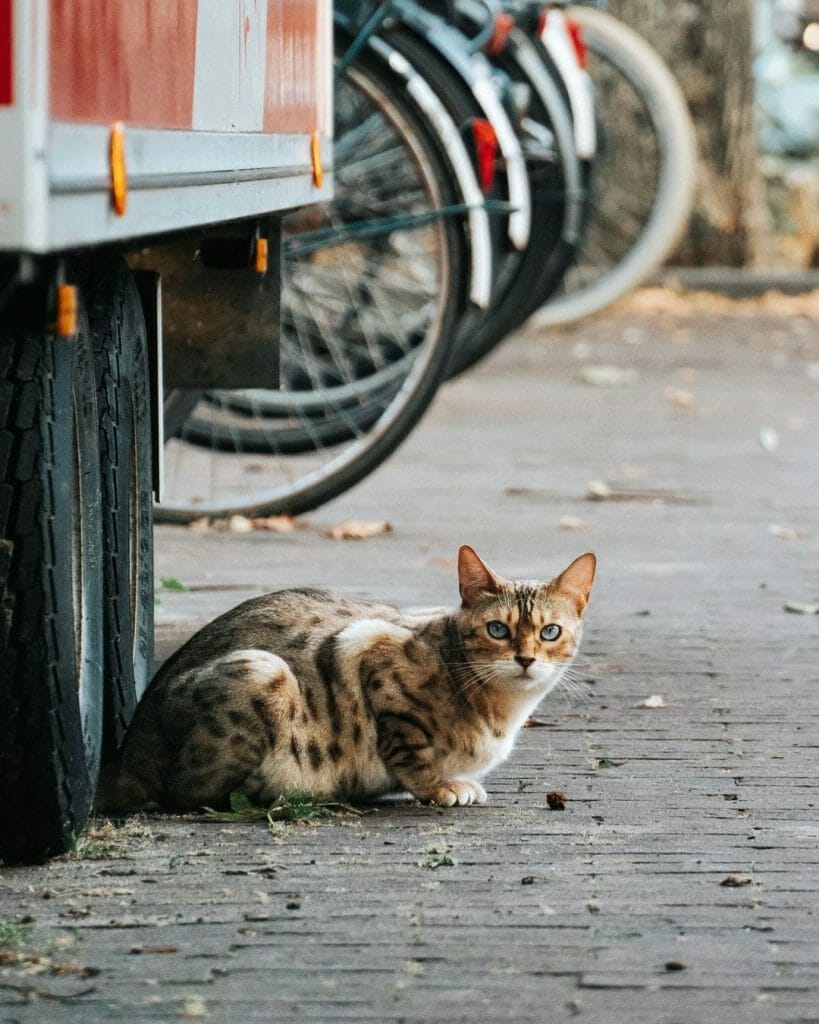

Bengal cats are large with sleek coats and muscular bodies. They carry their thick tails low, but let’s not forget about what he’s mostly known for, his appearance. He has a marbled or spotted coat that can catch anyone’s interest!
His head is broad while his ears are small, the eyes have black rims, and the whisker pads seem to be very noticeable. The pearl or gold dusting effect can only be seen on this particular breed, but not all Bengal cats would exhibit such a glittery coat.
The height can be anywhere from 8-10 inches and the weight, 8-15 pounds. His coat colors usually include silver, brown, and snow. There are also unrecognized colors such as blue, black, and charcoal.
Temperament
Ocicat
Ocicats do well in a household with other pets. He is highly sociable and would love to have daily interactions with literally anybody. Even if a stranger comes by to pet him, he’ll be glad to receive the attention and affection.
Training him comes easy as well. He’s intelligent and can pick up commands after a few sessions. If you call him by his name, he’ll certainly come to you in an instant. Just like a puppy, he can also respond to verbal commands such as “sit”, “stay”, or “no”.
Socialize him with your other pets, even if it’s a dog. He should have a companion at all times or else he might develop separation anxiety.
Bengal
Most Bengal cats are chummy despite their exotic and quite intimidating appearance. However, their friendliness gets even better and affection levels go higher whenever they are with their favorite family member.
To make sure he gets along with your other pets and kids, he has to be socialized as a kitten. If you introduce new friends to an older, unsocialized Bengal cat, helping them get along with each other will be challenging.
If you want to know what your cat needs, he’ll certainly let you know what that is. He’s not particularly a loud cat, but he can be a vocal feline when he has to.
Some owners would notice that despite the Bengal cat being labeled as one with high energy levels, others would seem like couch potatoes. This doesn’t necessarily mean that they are lazy but rather just love it when they are on your lap.
Exercise Needs
Ocicat
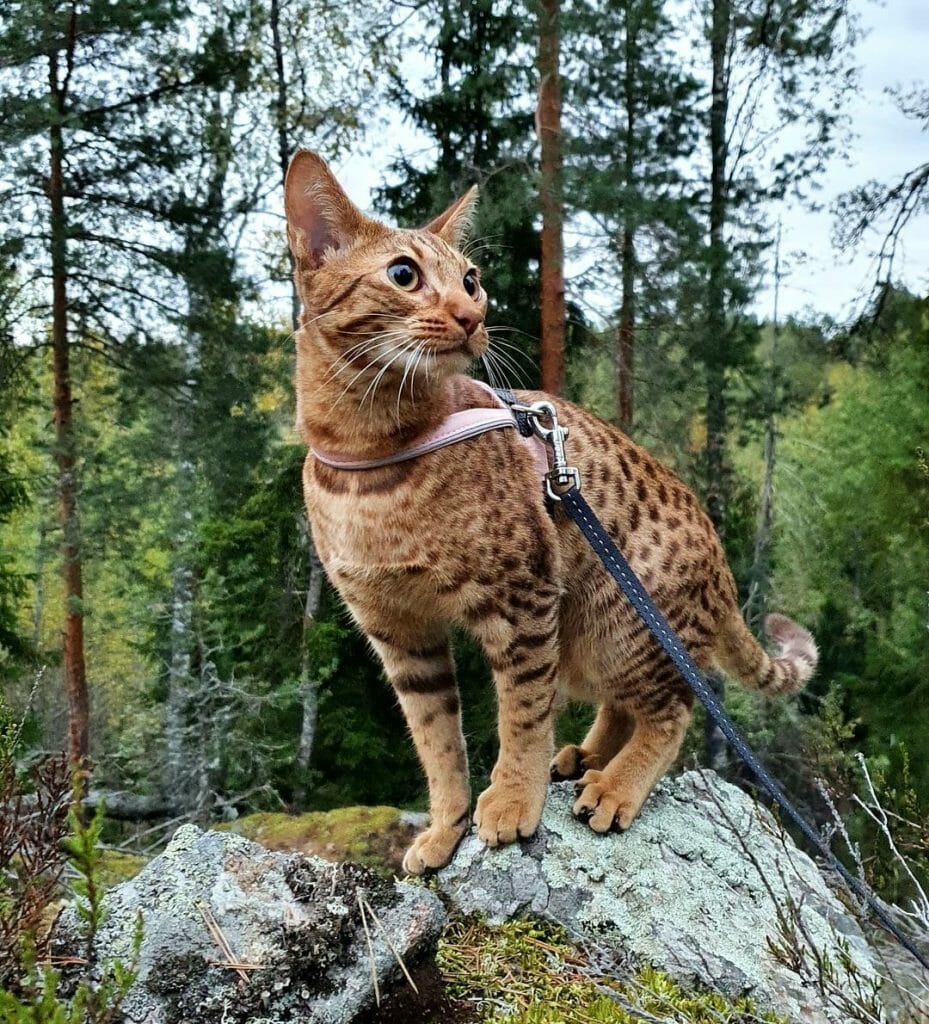

Ocicats are highly energetic and would love to be brought outside regularly for a play. If there are trees in the nearby area, he’ll try to flaunt his talent in climbing up tall objects. He can be walked on a leash, so it won’t be a problem letting him roam around the neighborhood. You can also let him go to a yard as long as it’s secure.
If he’s indoors, you can install quality cat towers and toys to encourage him to stay active. It is advisable that he doesn’t play alone as he’s highly dependent. He’ll be glad to have you as his playmate, but having another friendly cat or dog will work out for him too. Still, try to spend loads of your time with him!
Bengal
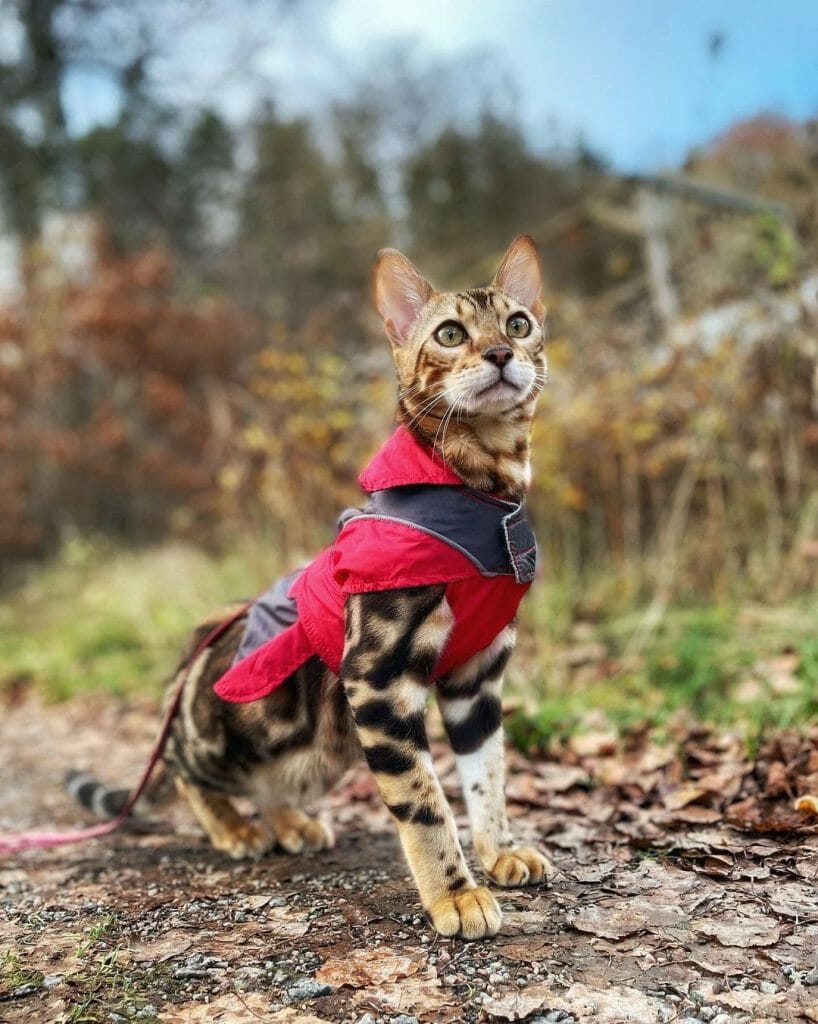

Exercise doesn’t just involve physical activities. This cat breed is so intelligent, it would be a shame not to mentally stimulate him with games and drills. He is one curious pet and would love to try out new things. Contrary to misconceptions such as that cats dislike water, the Bengal cat would love to be in a tub with shallow water!
If he’s not splashing around, cat toys will keep him entertained, especially if you are away for a few hours. Sometimes, toys can’t be enough so why not have a second cat?
Grooming Requirements
Ocicat
The Ocicat breed is not a hypoallergenic cat, so it is necessary that you give him a weekly brush. Other than that, there is not much you should add to his grooming time. Baths are not needed unless your pet is scheduled to be presented in a show. If ever he is, shampoos that will add more vibrance to his coat will be the perfect option.
Bengal
As it is for all cats, care is essential and that includes regular grooming. However, cleaning him doesn’t have to be done often. A weekly brush is enough to keep his coat superb and neat. As mentioned, his love for water would mean giving him occasional baths, but washing him frequently is not required.
Health Problems
Ocicat
Although the Ocicat lives a long lifespan of 15-18 years, there are certain ailments to watch out for. They have to be diagnosed early so they don’t get worse over time. Some illnesses he may get are:
- Kidney disease
- Anemia
- Heart disease
- Gingivitis
Bengal
A typical Bengal cat lives up to 12 to 16 years, therefore a healthy breed. There remain to be a few health problems that may still develop, unfortunately. Reputable breeders will do their best for their kittens to avoid having diseases, but some can be persistent like:
- Cataracts
- Progressive retinal atrophy
- Hypertrophic cardiomyopathy
- Lymphosarcoma
Cost per Kitten
Ocicat
Adoption: $75 to $150
Reputable Breeder: $800 to $1,500
Bengal
Adoption: $75 to $150
Reputable Breeder: $1,500 to $3, 000
Which Cat Breed Should You Choose?
It is a tough call since both cat breeds are very similar in many ways. There are subtle distinctions, however. The Bengal cat retains a bit of its “jungle cat-titude” nature hence his inclination to swim and climb up trees. Ocicats, on the other hand, is a more mellow version of the Bengal cat. Another difference would be that the Bengal cat is more independent and stubborn than the Ocicat.
You will not go wrong with whatever you choose just as long as you can provide your pet with a suitable and productive lifestyle!
